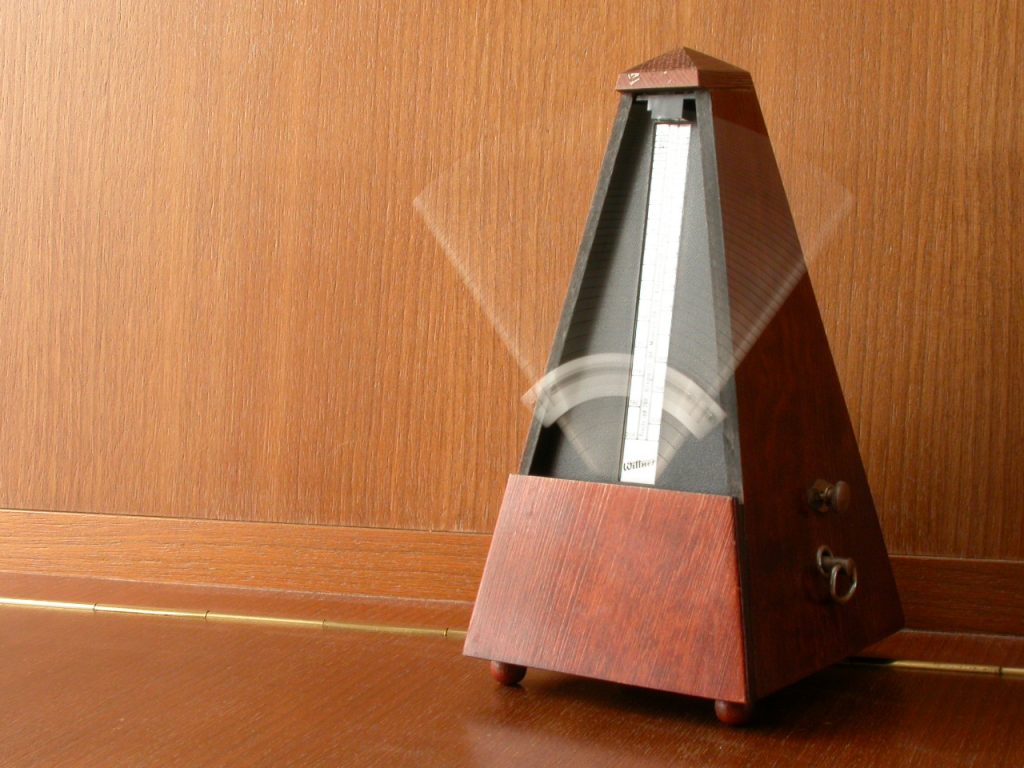How to Use a Metronome to Learn a Strathspey

When you play a strathspey, does anyone ever tell you that it “sounds like a march”? Is it difficult to get the correct strathspey rhythm, no matter how many times you play through the same tune? One method of learning a strathspey correctly is to use a metronome from the outset, and hear your playing improve.
In Scottish country dancing, the strathspey is one of the four traditional dances, the others being the jig, the reel and the waltz. A strathspey is in 4/4 time, but played with an entirely different rhythm than a march. Since it is a dance tune, a strathspey must be played with a clear “bounce”. Traditionally, the four beats in a bar of music should be played strong, weak, medium, weak (SWMW) but this type of pulsing can occur only after one has mastered all of the other fundamentals of piping, which include scale navigation, basic rhythm, proper gracenoting, embellishments, ALAP/ASAP, and finally, pulsing. For a strathspey, the SWMW is a template that will come with time and experience. But for us pipers in a piping grade say, lower than Grade 2, we should focus now more on our fundamentals than on SWMW. That’s where a metronome can really come in handy to improve our basic strathspey rhythm playing. With time and experience, eventually we should be able to expand the basic rhythm into its justly deserved, full-fledged, strathspey pulsing.
To begin, let’s look at the first line of "The Marquis of Huntley's Highland Fling", shown in the Figure.
Note that there are four beats in each bar, as shown by the four arrows in each bar. The arrows don't align proportionately in the figure due to the uneven placement of the notes and embellishments in the written music, but they are, in fact, placed where each beat should occur. And of course, the beats are evenly spaced when playing.
One reason strathspeys are so difficult to master lies in the failure to play the cut notes ASAP (as short as musically possible). As we know, the sixteenth notes should not be played as written, which is a 3:1 ratio (dotted eighth note followed by a sixteenth note). The cut note must be played clearly and distinctly, but played an instant before the next beat. If the sixteenth note is too big, the hoped for “bounce” will disappear, and you’ll end up playing something that sounds more like an awkward 4/4 march.
So, try this exercise: Set the metronome at a comfortable tempo of 60 to 70 beats per minute. But instead of letting each beat get one click, wait for two clicks of the metronome before going to the next beat. Yes, that’s only 30 to 35 bpm, but you will immediately get a better sense of how long the dotted notes must be held relative to the cut notes. In fact, one can take this a step farther, and wait for four clicks on each beat, then quickly “pass through” the dotted note, to again land squarely on the next beat.
If you use the metronome often, and consider it a learning tool instead of a crutch, you will be able to focus your efforts on rhythmic accuracy. Also, allocating two clicks of the metronome for each beat will also help to improve your playing ASAP notes, too. After a bit of practice, repeating each bar several times, and using the Dojo U tune building method, you can then slowly increase the tempo. Remember to record yourself playing along with the metronome. Listen to the recording and ask yourself how close are you playing to the beat? Eventually, you will be able to play with one click per beat, and you might be amazed at how well you are now playing a strathspey.







Responses